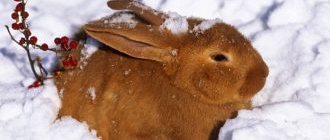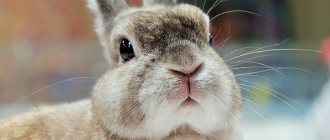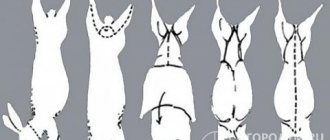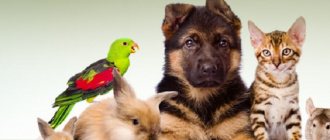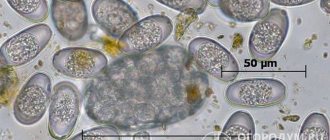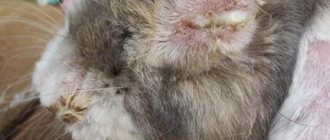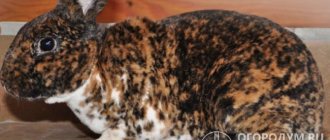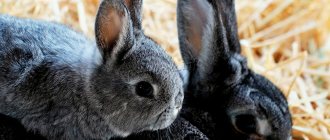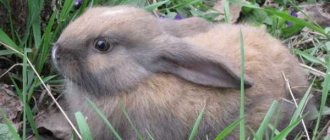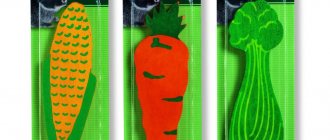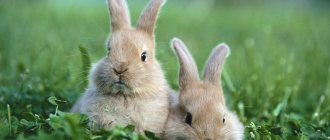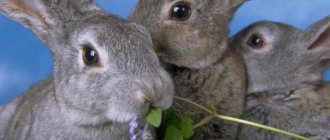How to identify real mink fur and distinguish it from a fake
- The most important difference is the price. It is impossible to buy a high-quality mink coat for next to nothing. Don't buy into the tempting prices offered by market sellers. For a low cost, you can purchase imitation mink fur or a fake made from cheaper material. It is better to purchase a quality product in a well-known store that has established itself in this industry; you can also get a purchase guarantee and practical advice on caring for the product in the store.
- Before identifying natural mink fur on a fur coat, study the special markings. Fur marking is a special label that indicates:
The marking must contain the individual number of the fur product
- country of the brand;
- country of origin;
- Name of product;
- type of fur;
- brand;
- number of the declaration of conformity.
Nowadays, marking a fur coat is a kind of quality mark by which you can both identify mink fur and gain confidence in your purchase.
Nowadays, finding high-quality mink skin is very problematic, not to mention the product itself from the cute animal. Unscrupulous manufacturers of mink products offer their cheap analogues. It’s so easy to confuse the fur of a marmot or beaver, after a little processing, with the fur of everyone’s favorite predator. But, as the famous proverb says: “Forewarned is forearmed!” Which we will discuss below.
How to distinguish a mink from a rabbit - video for buyers
To go with a mink coat, you should definitely buy shoes for the winter.
Mink fur is beautiful, warm and wearable - it is both a salvation from severe cold and an indicator of the status of the owner. Mink coats are always fashionable, always expensive and at the same time always in demand.
Such popularity of mink coats could not go unnoticed by lovers of easy money, so counterfeits of excellent fur, alas, are not uncommon. Under the guise of a Shanghai leopard, they are unlikely to sell you much better fur, and it will be quite difficult to identify a fake: masters of the genre have in their arsenal more serious counterfeiting tools than watercolor paints. If you are planning to buy a fur coat or other mink product, it is better to learn a little more about this fur and be sure to avoid fakes.
Place of purchase
The more reputable the place where you buy your fur coat, the more confident you can be that you will get exactly what you want. Go to reputable stores to choose furs. Another indicator that should give you pause is the extremely low price. Do not rush to rejoice at the opportunity to purchase a good thing inexpensively, but instead take a closer look at the product. However, it’s worth doing this even if you buy furs in a good store.
Rabbits and marmots
Often less expensive fur is passed off as mink, usually rabbit or marmot. To avoid mistakes, run your hand over the fur: mink fur is soft to the touch and elastic, it will immediately return to its previous position. The fur should under no circumstances be prickly.
Examine the undercoat; in a mink it is dense and even, just like the needle-like guard hair.
A rabbit and a marmot will be much softer; such fur, if stroked against the grain, will not return to its original shape, and its frame will be uneven. Often, manufacturers of fakes trim the frame to give the fur a mink-like appearance. This trick is also easy to reveal - the shorn frame is prickly. In general, to determine the authenticity of a mink, iron it.
Made in China
No matter how you feel about Chinese goods (they are also quite high quality), mink produced in China must be approached with caution. A Chinese mink usually turns out to be a tarbagan (Mongolian marmot), its pile is stiffer, and when stroked it puffs up. They may explain to you that this fur coat is made from wild steppe mink. Don't listen. The mink does not live in the steppes and does not yet plan to move, but the tarbagan lives there.
Inside out
In order not to doubt the correctness of your choice, inspect the underside of the fur (on the back of the product at the bottom, the lining should move away from the fur). Inspect the seams - they should be very neat. If instead of seams there is glue, then you should definitely refuse to buy such a fur coat.
Mink skin should be light - white or cream. But you shouldn’t draw conclusions based on this sign alone: modern craftsmen paint the skin a lighter color.
Quality checking
However, even if the mink is natural, it is far from certain that it is worth buying. If the dressing technology has not been maintained, the fur will not demonstrate the wear and tear characteristic of mink. Pinch the fur (not too hard). There shouldn't be a lint left in your hands. Only in this case does it make sense to purchase the product. If there is something left (fluff or hairs - it doesn’t matter), don’t doubt it - the fur will start to come out very quickly.
When buying dyed mink, also check the quality of the dyeing. For this you will need a white scarf. You need to squeeze the fur tightly through the scarf, and then examine it. If the slightest traces of paint remain on it, it is also better not to buy such a mink.
A real high-quality fur coat is a woman’s pride. A real fur coat is evidence of her wealth, both feminine and material. Finally, a real fur coat will never allow you to freeze even in the most severe cold.
But how to choose it - a real fur coat? How not to make a mistake by purchasing a poor fake instead of real fur? Remember! Our selection of important recommendations will help you:
Tip #1. What should you pay attention to first?
The best way to start choosing is by touch. Touch the fur, remember it with your hands. If it's nice and soft, dry and smooth, that's what you need!
To make sure of the strength of the future shower coat and its durability (after all, a fur coat is not bought for one season!), tug on the wool. They must “sit” to death! High-quality wool will not come out if you rub the fur coat with a cloth. Pay special attention to this moment - you don’t want to walk around in the middle of winter in a bald fur coat!
Check the flesh - this is the back side of the skins. To do this you will have to look under the lining. Undyed fur is white, and a yellowish tint indicates that the fur is old. In addition, good “fresh” fur shines and shimmers in the light, unlike dull, low-quality fur.
Ignore the smiles of the seller - continue to study your future purchase. You can blow on the fur and make sure that all the fibers straighten out immediately, or squeeze it in your hand and sharply release it - the result should be the same.
A good fur coat does not smell. This is an axiom. Any foreign smell is a reason to be wary.
The bright color of the fur coat you like is not a guarantee that the new thing will remain as bright in the future. If you really want to dress up in a fashionable green or scarlet fur coat, rub it with the same white piece of cloth. If the fabric is not dyed, there is hope that the color of the fur coat will not change.
Tip #2. Where to buy a fur coat?
The answer is simple and completely unambiguous - in a specialized store or a reputable fur salon that has been operating for several years. The warranty period in the case of a fur coat lasts almost a whole year. Why refuse the opportunity to exchange low-quality goods during this period? If you decide to buy a fur coat at the market, no one will exchange it for you. And he won’t return the money!
Tip #3. Which model should you choose?
In addition to fashion, there is also such a thing as convenience. For example, if you plan to walk in a new fur coat with a small child in a stroller, you will need a long and very warm new coat made from beaver, male mink, fox or arctic fox. For ladies who are constantly driving, a short fur coat would be a good option - it does not interfere with driving. A fur jacket made from short-haired mink or otter fur is also suitable.
Tip #4. Should I buy a coat made of dyed fur?
It happens that a fur coat is dyed for only one purpose - to disguise defects in the workmanship. In such cases, a dark color is usually used. Of course, you shouldn’t buy such a fur coat.
However, there are product categories that simply need to be painted. For example, this includes a fur coat made from the skins of wild nutria, which are not very attractive in color and need to be refined.
Don’t forget that fur coats in bright colors are now in fashion, which can only be achieved through dyeing.
Modern technologies make it possible to achieve high-quality coloring, therefore, when buying a product from a reliable store, you should not worry about the durability of the bright color.
Tip #5. Trader secrets: how to expose a rabbit?
It's unpleasant to realize that you bought a fake. At the same time, the fur may be natural, but not at all what you expected, and most importantly - cheaper. For example, a rabbit often has to “play” the role of a mink or chinchilla. It’s not difficult to expose him, you just need to know a couple of secrets.
A real mink has rough fur, while a rabbit has very soft fur.
A real chinchilla is cool to the touch. If you are not too lazy to study the undersides of the skins, you will be convinced that chinchilla skins reach a length of only 20-25 cm, while rabbit skins are longer - up to 70 cm.
Instead of a mink, they may give you a marmot. Cheap Ukrainian mink is often passed off by sellers as more expensive Canadian mink. Signs by which you recognize a fake:
The marmot's fur is slightly prickly, its hairs are of different lengths - unlike mink.
The Canadian mink is very fluffy, and the skins of its Ukrainian “sister” have rather scanty down.
To avoid buying a relatively inexpensive fox fur coat instead of a silver fox, just count the number of colors in the fur. Each silver fox fur starts at the base with a gray color that fades to white, ending in black. Foxdog is two-colored.
A raccoon and a raccoon dog are basically related, but that's not enough to warrant paying the same amount of money for them. The raccoon is noticeably more expensive because its fur is warmer due to the comparative rigidity of the spine and down. The fur of a raccoon dog is softer, but retains heat less well.
For the warmest beaver coat, the seller can sell dyed nutria, which has poorer fur, not so thick and dense.
Tip #6. A few more tricks
Can you easily look behind the lining? This means that the fur coat is of high quality - the manufacturer does not consider it necessary to hide anything from the buyer. In a company store, it’s not a sin to ask the seller to slightly rip the lining - this is the only way you can be sure of the quality of the seams.
A fur coat without flesh (the back side of the skin) is not a fur coat. In any case, it has no right to be called a natural fur coat. Well-made flesh, no matter how you shake it, will not creak or crunch. The most she can make is a quiet, delicate rustle.
Don’t be content with just looking at the quality certificate - check its data with the information indicated on the label - country of origin and type of fur.
If you need the warmest fur coat, choose fox, beaver, sable or arctic fox. In second place are astrakhan fur and goat, and in third place are mink and chinchilla.
If the main thing for you is for your fur coat to last longer, give preference to an otter or a brown bear. They are followed by mink, sable, beaver and astrakhan fur. Next are the arctic fox, the fox and the sheepskin, and the rabbit, the marmot and the chinchilla close the pedestal. A properly chosen fur coat will give you self-confidence and save you from frost in winter.
Good clothes made from natural fur are always a very profitable purchase. And even more so a good mink coat. This is a classic of the fur market, always fashionable, in demand and loved all over the world, which will not only warm you up in the cold, but also emphasize your beauty and individuality. Such clothes will serve you faithfully for many years if you follow simple rules of care and storage.
To choose a good quality mink coat, you need some skills and knowledge, without which you risk paying a lot of money for a fake - mink models, like no other, are susceptible to counterfeiting. Moreover, not only skillfully crafted fur from other animals, but also products made from artificial fur are sometimes passed off as natural mink! So, how to avoid becoming a victim of scammers?
How to determine the quality of fur
First of all, when buying a fur coat made from natural fur, you must make sure that the fur is truly natural and of high quality. To do this, do not hesitate to take a good look at the fur, touch it and even smell it.
- First of all, look at the color and texture of the fur. If it is dull, not soft enough, the fibers stick together, this should alert you. Natural high-quality mink fur shimmers and shines evenly, easily squeezes in a fist and immediately straightens.
- The country of origin of fur skins can also be determined visually. Russian differs from high-quality Canadian or Scandinavian in that the Chinese is rarer and almost without down, while the Russian, on the contrary, is very thick, with long fibers. has a thick underfur and not too long pile, while the Scandinavian one is distinguished by both thickness and short pile.
- or poorly and incorrectly painted. Poorly colored fur can be checked with a light-colored scarf. If you swipe a scarf and there are traces of paint or lint on it, then this coat is not suitable.
- Gently tug the fibers - if they fall out, then in a couple of years you will become the owner of a fairly bald fur coat. In addition, natural fur, even sheared or plucked, must have a fairly thick undercoat, which provides the product with durability and warmth.
- If you blow on the fur fibers and they immediately fall into place, it means this is a natural, high-quality mink model.
- Look behind the lining of the model - and self-respecting manufacturers never sew the lining to the fur underneath - and pay attention to the reverse side of the fur, the inner side. If it is, then the fur coat is natural. The quality of the fur itself depends on it. If the flesh is thick and hard, then it is definitely not a mink. Good fur should not “rattle”, i.e. make some sounds from the inside out. Also, the darker the color of the fur, the older the fur product.
In conclusion, a few more words about how to distinguish a good mink coat from a fake. If you run your hand against the fur, the mink's hairs immediately fall into place. If they bend back or remain disheveled, this is not a mink. A real mink coat should be very light - it is much lighter than a coat made from other fur.
So, we have decided on the quality of the fur in principle. But we want a fur coat made from mink, and not from some other animal. Not all sellers are honest with us. To avoid being sold a rabbit, marmot or beaver for good money, it is useful to know some differences between mink fur and other animals:
- A rabbit is often passed off as a mink: a real mink has hard hair, while a rabbit's hair is very soft and uneven in color. Rabbits also have hairs of different shines; they are matte; mink hairs have the same shine. When you pluck rabbit fur, a small tuft of undercoat remains in your hands. This does not happen with mink.
- The marmot is another leader in mink fakes. more prickly, and the hairs are heterogeneous, of different lengths.
- A fake beaver or sheared beaver is sometimes passed off as a mink coat. Marmot fur and beaver fur are similar in stiffness, but both are definitely tougher than mink. When you run your hand against the fur, the hard hairs do not straighten immediately; they are not as plastic and pliable as those of mink, although they are springy. In addition, the size of beaver pelts is larger than that of mink. Their shape is also different - beaver skins are more square. The thickness of the beaver's flesh is almost twice that of the mink. And the fur is thicker and denser than even that of large male minks.
It is advisable to buy real good quality mink coats only in specialized stores, sales areas of fur factories and boutiques. Request a quality certificate from the seller, the data from which about the type of fur and the place of its production can be compared with the product label. By following these simple rules, you can always choose a good mink coat and distinguish it from a fake.
Nowadays, finding high-quality mink skin is very problematic, not to mention the product itself from the cute animal. Unscrupulous manufacturers of mink products offer their cheap analogues. It’s so easy to confuse the fur of a marmot or beaver, after a little processing, with the fur of everyone’s favorite predator. But, as the famous proverb says: “Forewarned is forearmed!” Which we will discuss below.
How to distinguish mink from fake
Experts say that it won’t be difficult to distinguish a first-class mink from, say, a third-class mink, because you won’t want to let go of high-quality natural fur. But, all the same, it is better to know about some nuances, thanks to which you yourself can become an expert in choosing this product:
- Run your fingers through the mink fur
When carried out, as they say, “with the grain and against the grain,” you should feel soft and silky. If you can feel two layers of fur that are different from each other (guard hairs and undercoat) and each hair is approximately the same length, then the quality speaks for itself and is rated 5 points.
The pile does not recover on its own after being attacked, which means that the storage conditions have been violated. This may be a consequence of being folded for a long time.
- Check the direction of the pile
When held up to the light, the fur should shimmer and shine. Also, the direction should be in one direction and uniform. You can also blow on the mink, thereby checking whether the hairs stick together or not. In the original fur, the fibers should not stick together, but in the analogue, yes.
- Look at the color of the fur product.
The color of the mink should not be too deep black. Manufacturers, trying to disguise fur as mink, dye it in different shades. This is checked with a white or light rag; if after rubbing the skin the material remains clean, then no dyes were used.
- Feel the flesh
The bottom layer of mink skin is always soft, one might even say velvety, but not thin. The natural color of the flesh is cream or white, without traces of paint.
Thus, tactile sensations are a guarantor in determining the authenticity of a mink. By following the advice written above, you can independently expose the fake to clean water.
Key differences between rabbit fur and mink fur
In fact, even an inexperienced buyer can find a replacement; all you have to do is evaluate the product according to certain parameters:
- color;
- fur stiffness;
- rapid return to shape after compression;
- no traces of staining, etc.
By color we mean the natural color of the mink. It is often called "black diamond". Indeed, in natural light the fur shimmers like a precious stone.
It is for this reason that many manufacturers from Turkey and China are trying to fake it naturally. It is extremely easy to identify a fake - run a damp white cloth over the fur. You can do it simpler - ask the seller for permission to splash a few drops from a bottle of drinking water on the fur, and then rub the moistened part of the fur with an ordinary napkin.
If there are colored streaks left, the fur has been dyed.
How to distinguish Chinese mink
It is known that the cost of Chinese mink coats is much less than European ones. Although China has learned to produce high-quality products from the mink industry, there are still a huge number of fakes. But there are also plenty of fakes among them.
In materials from the cheaper segment, the mink is tinted or tinted to be sold as black.
Below are some aspects by which Chinese mink is identified:
- A tall and pronounced awn, which seems to lie on the undercoat and seems prickly. Shade of dark brown color.
- Glass shine always gives away Chinese mink, not even shine, but a matte tint. Usually the fur shimmers with a diamond or beautiful metallic light.
- Dense undercoat with long guard. In fact, this shouldn’t happen, so in China they dye it, trying to pass it off as black mink; accordingly, the flesh is also dyed. But the flesh of a natural black mink cannot be dyed.
These signs make it clear that the animal was raised in the Republic of China. It is known that it differs from the Chinese in the thickness and longness of the pile, while the U has a short but thick pile. A huge percentage of mink products are black skins with a defect called “unproduced awn,” which to amateurs may resemble North American mink skins.
Video: Fur coats: how not to buy a fake that you’ve been saving for for so long
How to distinguish rabbit fur from other furs
Natural fur products will always remain in fashion, so it’s not even worth talking about faux fur.
However, it is becoming increasingly difficult to distinguish natural furs due to the work of breeders. For example, rabbit fur after special processing is quite difficult to distinguish from beaver, chinchilla or mink fur, but the price categories of these furs are very different. Experts can easily distinguish these furs by their external characteristics, but for a person far from breeding animals, some nuances are almost invisible. For example, the softness, shine and silkiness of rabbit fur products attract a lot of attention, because today there are so many different breeds of rabbits that it is difficult to distinguish between a mink and a Chinese rex or an Australian orylag. The color scheme also decisively “confuses the cards.” The color of rabbit fur can have shades from gray-white noble tones, silver, just pure gray to reddish-brown, which is more typical for beaver fur. Unfortunately, for all its advantages, rabbit fur is inferior to the furs of noble animals such as mink. Mink skin is tougher to the touch than rabbit skin, which extends the service life of mink products. The largest number of “mink” fakes are made from rabbit, while the skin can be dyed, the length of fur hairs can be trimmed, in general there are many tricks on how to make a “rabbit mink”. To check the fur, turn it over with the wrong side facing you, carefully inspect the skin for streaks and traces of dyeing. Real mink has a flat white or beige matte color on the reverse side. In addition, since the rabbit skin is processed before dyeing, it becomes thinner, and therefore even less durable.
The second most frequently counterfeited product is beaver fur, which is increasingly used when sewing luxury fur products. The beaver skin is very soft and dense to the touch, fluffy, so it is not afraid of any weather troubles in the form of rain or sleet. For our winters, beaver fur products are simply ideal: warm, waterproof and also very durable. Beaver fur practically does not dry out, does not fade, does not lose hair follicles, that is, does not go bald. Compared to rabbit fur, beaver pelts hold the record for wear resistance. So how can you tell the difference between beaver and rabbit fur? If you stroke a beaver skin along the hairs, you will feel the soft structure, and if you stroke it against the grain, you will feel that the beaver fur is elastic and hard. No matter how you iron a rabbit, the fur will still be soft. A rabbit's skin tissue is soft, while a beaver's is hard, and the beaver's undercoat is very thick. In addition, the flesh of a rabbit skin is a little crunchy, while that of a beaver skin is as soft as the skin itself. The easiest way is to focus on the size of the skin itself: for a rabbit, the size of the skin is rarely more than 25-30 cm in length, and for a beaver it reaches 45-50 cm.
No retail or wholesale sales can justify the low price of a chinchilla fur coat, so do not fall for the persuasion of sellers and words about “promotions” - a fur coat made of such expensive fur as a chinchilla cannot be sold at the price of a rabbit fur coat. Therefore, first of all, look at the size of the skins from which the fur coat is made. A chinchilla's skin size is two times smaller than that of a rabbit, that is, no longer than your palm. Chinchilla fur is more delicate than rabbit fur, since almost fifty thin hairs grow from one hair follicle of a rodent. Where chinchillas' skins meet, there is a slight "gap" of fur, since rodents have shorter fur on their tummy. It is unlikely that such an “overflow” effect can be achieved with chinchilla rabbit fur coats, and you will easily notice its absence. Uneven fur color can also be a sign that, under the guise of a chinchilla, they are trying to sell you a good fur coat, but made from a rabbit.
How to distinguish mink from other fur
In order to warm not only the body, but also the soul in the winter cold, you should know the difference between expensive and cheap fur. This can be done easily if you remember the following signs:
- Mink can be distinguished from other colored fur by the stiffness of the hair. Mink fur is tough, but not itchy. The service of the product directly depends on this.
- The direction of the mink pile is one directional. When carried out, they should return to their original position.
- The shine of a fur product is of great importance. Mink fur has a uniform, dim sheen, and the presence of white stripes on undyed material is also allowed.
- The quality of the seams on a mink product must be impeccable, the stitches are thin and even, without the presence of glue. Glued fur is of lower quality than sewn fur. Each skin must have a stamp on it - this is the main difference between a certified product.
- The smell of mink cannot be sharp and unpleasant.
Today, mink coats have gained popularity in fashion trends. They received their status due to their solidity and investment character. Unlike down jackets and fur coats of other animals, mink coats are durable.
How to recognize good mink fur
Initially, it is worth finding out the gender of the mink animal, as this is reflected in the texture of the fur. Fur made from the skins of a female is considered to be of the best quality; the products are soft and light. In males, the fur is tougher and denser, so the skins are heavy and are cut more often.
Separating a mink from a rabbit
A fur coat is a woman’s “everything”. This is luxury, beauty, status. There are rumors that one resident of the Krasnodar region moved to Moscow only because the climate of her hometown was too warm to wear the luxurious fur coat given by her husband. And another fell so in love with the model presented in the boutique that she ordered two absolutely identical copies at once - in case something happened to one of the fur coats. All these, of course, are extremes, but the fact remains: ladies love fur coats, and often these clothes become the most expensive in their wardrobe. One thing is bad - unscrupulous sellers profit from women's weaknesses, passing off the wool of a hare worn out by life as noble mink fur.
It's hard not to fall in love... with these fur coats!
To buy a truly high-quality fur coat that warms not only the body, but also the soul, you need to know how to distinguish expensive fur from cheap one, and be able to recognize a fake.
Selfish interest
Let's say right away: a mink differs from a dyed rabbit in the stiffness of its hair. Her fur is hard, but not prickly. That’s why a mink coat lasts for ten years, but a rabbit’s hair is soft, and a product made from it quickly wears out and “goes bald.”
In general, people say that it’s easy to recognize really good fur: you don’t want to let it go. But experts recommend not only holding the soft fur coat in your hands, but also conducting several tests. Don't be shy, as a buyer you have the right to do so.
1. Run your hand sharply along the skin from bottom to top. Are the villi falling off? Do you have to smooth them with your palm to restore their previous shape? This means that the fur is of low quality or was stored incorrectly (folded, in a warm place, unventilated area, etc.).
2. A good pile should lie in one direction
3. Hold the fur coat up to the light source. Good fur shines, shimmers and plays; bad fur remains dull. Most likely, this is the fur of an animal that is sick or raised in unfavorable conditions. In just a couple of seasons, a fur coat from such fur will turn into tattered clothes a la “grandmother used to wear it.”
4. Part the pile and look at the underhairs (short hairs at the base). The thicker and smoother it is, the warmer the fur coat. “Liquid” fur indicates that the skin was greatly stretched during dressing (to reduce the price of the product) or that this fur was collected during the molting period of the animal. Both of these have a bad effect on the heat-saving properties of a fur coat.
5. Blow on the fur to check if the fibers are sticking together.
6. The color of the product also matters. Bad skins are often dyed black to hide their defects - check such fur coats carefully! Well, to determine the color fastness of colored fur, you need to run a damp handkerchief over it - there should be no marks left on the fabric!
7. Next is the flesh. No, this is not a curse word, this is the bottom layer of the skin. It should be soft, clean and light. Fold back the lining of the fur coat (it should not be sewn on!) and remember the flesh in your hands - is there a slight rustle? Eat? The furriers overdid the chemical treatment, or the product was wet.
By the way, since you’ve already looked under the lining, check the quality of the seams: the threads should not stick out, the pieces of skin smoothly transition from one to another.
Such sloppy flesh is a sign of low quality fur coat
8. And don’t be shy about smelling your purchase (especially if it’s a nutria coat). A product with a “smell”? This is a sign of skin decomposition or improper fur handling.
Don't be under the illusion that it will fade over time. Over time, the unpleasant odor will only intensify.
Well, as for fashion, it is very democratic when it comes to fur items: short and long, loose and fitted, avant-garde from FENDI and classic from Marconi - anything is possible! It is unwise to follow trends here: they last a maximum of a couple of seasons, and a properly chosen fur coat (with proper care) lasts at least several years.
White and black - exquisite classics from the Italian brand Marconi
How to distinguish sheared mink from other fur
Initially, what you need to pay attention to when choosing a mink is the weight of the product. Mink is much lighter than any other fur. Very often, manufacturers camouflage themselves with the fur of a rabbit, beaver, ferret or marmot. Therefore, it is so important to know their main differences in order to avoid counterfeiting.
- The marmot is often passed off as a mink. But it is distinguished by its prickly fur and hairs, which are of different lengths. The marmot's spine is elastic, but plastic, so it does not return to its original shape. When used, the fur turns blue.
- Rabbit fur is softer than mink and has a non-uniform color. When you pinch the undercoat, lint remains.
- The ferret has a high awn and sparse undercoat. Also, the color of the ferret's fur is peculiar (light below and dark above).
- The beaver has tough fur and thick flesh.
When choosing mink fur, you should not rush; now you know simple methods; you should use all your senses to find the right model. After all, in order to make a profitable purchase, you need to be attentive to the details.
Ninel 8 800-333-8-339 423800, RT, Naberezhnye Chelny, Vakhitova Ave., 27, apt. 366
At all times, a woman remains a woman, even in our time, buying a mink coat is the dream of many of our contemporaries. A product made from the real fur of this valuable fur-bearing animal cannot cost little, so some ladies save money for a very long time, sometimes even denying themselves something to buy a mink. Imagine the disappointment when, instead of a mink coat, they are given clothes made of lower quality fur. To prevent this from happening, you need to know a few simple rules that will help determine whether real fur served as the material for a given product.
At all times, a woman remains a woman, even in our time, buying a mink coat is the dream of many of our contemporaries. This valuable fur-bearing animal cannot be cheap, so some ladies save money for a very long time, sometimes even denying themselves something to buy a mink. Imagine the disappointment when, instead of a mink coat, they are given clothes made of lower quality fur. To prevent this from happening, you need to know a few simple rules that will help determine whether real fur served as the material for a given product.
What kind of fur are fake mink made from? We have already written about how to identify high-quality mink fur. But many of our inexperienced women cannot immediately determine whether the mink coat they have in their hands is real or not, until they know what a fake looks like. To do this, you need to know what furs fakes are made from and how to identify them: Rabbit. The main difference is the very soft pile of rabbit fur. It is also worth paying attention to the color; in a rabbit it is not uniform and does not have the uniform shine that mink has. If you pluck a mink coat, there will be no hair left in your hands, while a rabbit leaves behind lint of undercoat; Beaver. The fur of this animal is tougher, its skins are larger. But the main difference is in the thickness of the mesra (the leathery base of the fur) - in a beaver it is several times greater than in a mink; Marmot. The fur of this animal is most often passed off as mink. The difference is in the plasticity of the fur. When stroking against the grain, the mink's fibers return to their place, and the marmot will become shaggy. In addition, the marmot can tingle and give a slightly bluish tint in the sun, which never happens in high-quality mink fur; Ferret. This fur can be distinguished by its higher guard and less dense underfur. The color is also different: the awn is darker at the ends, and the underfur is lighter. By the way, products made from ferrets are no less valuable, but if you are only interested in buying a mink coat, then you need to know the differences. There is one more nuance: if you have any doubts about fur, then you should pay attention to the style. Only straight fur coats are made from ferrets, due to the rare nature of the fur; Honorik. The most difficult case to determine the authenticity of the product, since this animal is the result of crossing a ferret and a mink. But the black color and thick brown undercoat indicate a fake. The easiest way to determine the authenticity of a product is by cost and weight. A real mink coat, the price of which cannot be low, is light. How to identify a Chinese mink coat? To be fair, it should be said that the Celestial Empire has learned to sew high-quality products. But very few manufacturers can boast of this. Therefore, if you decide to buy a mink coat from Canada or Greece, it will be very disappointing to buy a Chinese product. It will not last as long and will quickly lose its appearance. The main differences in the Chinese mink coat are: A pronounced high spine, which may even seem prickly in appearance; Chinese fur coats, for example, are very different from Scandinavian ones in their shine. For the latter, it is soft, diamond-like, and flows smoothly throughout the entire product. Chinese mink has a glassy sheen. The product shines in areas, and there can be no talk of any smooth shimmer; Undercoat. If the guard is high, the undercoat will not be thick enough. In some cases, the spine is cut off and the product is passed off as black mink. You can distinguish it by the color of the flesh. Natural black mink is light, while Chinese mink is dark. Using this knowledge, it is much easier not to fall prey to unscrupulous manufacturers and sellers. Remember that if you buy a genuine mink coat, it will make a queen out of a woman, and a fake will only bring disappointment.
Mink coats are the dream of any woman, regardless of her age and status. Today there is a wide selection of different models, so choosing a truly high-quality option is not so easy. Due to the fact that there are fake mink fur on the market, women can find themselves in a very unpleasant situation. To prevent this from happening, you need to know how to determine the quality of a mink coat.
How to distinguish mink fur from rabbit fur
There are several basic rules, following which you will definitely not buy a rabbit for the price of a mink.
- Coloring
Since in nature rabbits do not have the same color as mink, the fur is always dyed. This can be seen on the reverse side of the fur coat. If you are not buying a market samopal, the lining will not be sewn on so that the buyer can distinguish mink from rabbit or any other fur. A rabbit will always be painted, while a mink will never have any traces of paint (which is unnecessary) and will be grayish or white on the underside. Also, white hairs remain on the mink on the underside, which the rabbit does not have.
- Piece size
The mink is small in size, slightly larger than a squirrel. While rabbits are not only valuable fur, but also 3-4 kilograms of dietary, easily digestible meat© In other words, the size of a rabbit is immediately visible upon careful examination of the fur coat.
Some market traders sew a fur coat from a rabbit without even bothering to cut the fur into pieces. If your sheepskin coat is made from large single pieces, and the seller assures that it is “real Siberian mink,” ask him to show a mink of that size. Although there are also cunning sellers who sell exclusively sewn fur coats in pieces, and the pieces are cut in the shape of mink backs. In this case, you can check and distinguish a mink from a rabbit only by the underside color of the fur; it should not be dyed.
Possible defects
You can avoid buying a fake if you know the common defects in mink fur. This should include:
- Uneven fur color, fading, abrasions. All these flaws indicate that old and low-quality fur was used for sewing.
- Don't know how to check quality? Then inspect the fur coat for red spots. If they are true, then this indicates that the animals were kept in iron cages. Rest assured that it is simply impossible to get rid of such stains.
- The fur fibers stick together, there is no gloss or shine. These defects indicate that the manufacturing technology was not strictly followed.
- The villi have an uneven surface. Their appearance is similar to the result of a poor-quality haircut. Most likely, the fur was damaged by animals. There is also no way to get rid of such a flaw.
- How else can you check the quality of a mink coat? You just need to feel it. If it feels like you are touching parchment paper, then the fur is dry. Such a product will quickly crack and fall apart.
If at least one of the presented flaws occurs, then it is better to refuse to purchase this product.
What should you pay attention to?
When choosing a fur product, you first need to study the label. In most cases it is on the wrong side. The tag must indicate the materials used for manufacturing, composition, serial number, country of origin, manufacturer's address and other contacts. All inscriptions must be legible. Sometimes the label also includes care instructions.
In addition, products made from natural fur are in most cases branded, and therefore, when you see the brand name, you can safely search for information about the manufacturer on the Internet.
We should not forget that real fur cannot be cheap, because the production of such products requires high costs. Therefore, the low cost of a mink coat or boots with sheepskin should alert the buyer.
Also, when deciding to purchase a natural product, you should pay attention to its weight. Animal wool will always be slightly lighter than synthetic material. It is also necessary to take into account the presence of odor - there should not be any.
You should not believe sellers who say that the product has been sitting for a long time and therefore lint is falling out of it. Natural hairs should not fall out. Otherwise, we can talk about the fur being synthetic or that the animal could have various diseases.
Looking at the back of the product, you will notice that there are stamps on the skin, usually purple, and pieces of leather are sewn with small seams.
Important: some types of modern synthetic furs can also have a high cost, which is associated with high production costs.
Verification methods
There are certain secrets regarding how to check a mink coat. Today, many unscrupulous manufacturers are trying in every possible way to disguise the existing flaw. They paint the faded parts of the fibers or cover them with a special varnish, which gives the product luster and gloss.
How to check the quality of a mink coat? It is enough to use the following recommendations:
- Take your palm and move it against the growth of the pile. If the fur is of high quality, then after such a procedure it will be able to return to its previous position. There will be no dents or hair creases. And there should be no fluff or lint on your hands.
- How to distinguish good from bad? Just part the fur hairs and inspect the color of the flesh. If the product is of high quality, then it should be light. But the brown color indicates that the fibers have been dyed. The darkened color of the skin indicates improper storage of the product. The back of the skin will allow you to determine this.
- The joints of the skins of a quality fur coat should not be noticeable upon external inspection. They should also be highly accurate. You can check this by pulling them in different directions. The joints of the skins can be seen in the shoulder and collar areas. Seams must be made with strong threads.
- How to distinguish high-quality from low-quality? Take a regular needle and insert it from the wrong side. Then pull. The formed hole should not increase in diameter.
- The undercoat should have a soft surface and density. If you run your hand over it, it should create a feeling of softness, but not prickly.
- How to identify a mink coat? Just rub the skin with a slightly damp cloth. After such actions there should be no traces of painting. There are situations when manufacturers subject it to tinting. This gives it a supportive and beautiful shimmer. But the applied coating must not only be durable, but also not leave marks.
- The top hair should be of equal length. If there are protruding fibers on winter clothes, it means the fur has been trimmed. This product cannot be called high quality.
- You can tell how high quality mink coats are by smelling them. It should not emit the smell of animals or chemicals. There may be a slight odor of the cleaning solution.
Useful tips when buying a fur product, details in the video:
How to check in different ways
There are several ways to quickly distinguish natural fur from synthetic fur.
How to determine by touch
Natural wool always feels smooth and soft to the touch. If you run your hand over it, the villi will quickly return to their previous position. You can squeeze the product in your palm and then release it. Natural flesh will instantly return to its previous position, as it has a high degree of elasticity.
You can also notice that this fur is a little itchy. If you run your hand over it, the fibers will pass through your fingers, as if you were petting a cat. It is worth paying attention to the undercoat - it should be quite thick and soft. In addition, the natural material is always a little cool to the touch, and has a beautiful shine when exposed to sunlight.
Don’t forget that the fur of different animals feels different to the touch. Mink hair is quite hard, while beaver hair is very fluffy. The silver fox can be recognized by the presence of three different colors on each hair. And its skin is soft and warm to the touch.
Fire test
Another way to check the naturalness of fur is to set it on fire. This must be done carefully by pulling out a few fibers and bringing the fire to them. When real animal fur is burned, an unpleasant smell of burnt hair will be felt. In this case, the material will burn, leaving behind only ash.
Synthetics will begin to melt, and as a result will turn into a ball of plastic. The process produces a very unpleasant chemical odor. The complexity of this method is that not every seller will allow this experiment. Therefore, you can determine the quality by fire only after purchase.
Pierce with a pin
A pin or needle is another simple method for determining whether the fur you are looking at is real. Use the tip of the tool to carefully pierce the product. In the case of animal skin, the needle will be very difficult to enter, but the artificial fabric base can be pierced quite easily. You also need to pay attention to the hole that remains after the experiment. If you pull the skin in different directions, it should not increase.
Basics test
You can verify its naturalness by carefully examining the base and spreading the hairs apart. In the case of faux fur, it is always fabric, stretchy, you can see threads on it, and this immediately catches your eye. Natural products are distinguished by a smooth leather base. It is also worth paying attention to its color. A high-quality real animal skin will be white or very light, but if it is colored, then most likely it has been dyed.
Important: high-quality fur does not require painting. Often, manufacturers dye and cut it in order to hide any defects.
As you can see, you can always check whether the fur in front of you is natural or artificial. But every year it becomes more and more difficult to distinguish them. Modern technologies allow manufacturers to imitate natural materials as efficiently as possible, which causes many difficulties when choosing a product. In order to correctly identify all the differences and purchase a truly high-quality fur coat or sheepskin coat made of natural fur, you need to be very careful and use all the above recommendations.
Lining quality
When purchasing mink fur outerwear, it is important to pay attention not only to the condition of the fur, but also to the lining. If the product is really high quality, then you should pay attention to the following points:
- Made from material that is highly durable and of excellent quality. Most often natural silk is used.
- Exactly repeats the cut of outerwear. When worn, movement is free, and the fur itself does not bristle.
- The lower part of the outerwear is loose and not attached to the fur coat. You can get to the underside of the skins without much difficulty.
- The seams are processed with high quality, they are distinguished by smooth lines and durability.
- There is a cord trim around the edge.
Types of mink
A wide selection of mink allows you to sew a fur coat that will be ideal for wearing in a certain climatic zone.
Russian
This fur has remained one of the warmest for many years. It is distinguished by a high awn and underfur, so that its appearance seems a little tousled. Its price is quite affordable, and the range is wide.
Scandinavian
This type of mink accounts for 80% of all fur sold in the world. Characterized by a medium awn and thick underfur. How to identify mink fur? Everything is very simple: you need to inspect its surfaces. Scandinavian fur has a chic shine, which is why the product is popularly called “black diamond”.
Chinese
For those who do not understand how to identify a good mink coat, it is worth remembering one rule: do not purchase Chinese-made products in the markets. China produces high-quality mink, but increased demand does not allow it to be exported outside the country. Only low-quality budget products are supplied abroad. In addition, Chinese manufacturers stretch the fur, as a result of which it becomes brittle, the service life is reduced and, as a result, it does not warm.
North American
Determining the quality of fur is very simple. It has low pile, but there is no shine at all. Most often, such a product is called velvet. The peculiarity of the North American mink is that it is perfect for the harsh Russian winters.
wild
How to check for quality? Don’t think that the more expensive it is, the better the quality. This type of fur is considered rare. It is characterized by a long pile, almost the same as that of sable. Its color is dark gray-brown. It is also distinguished by its light underfur. Wild fur has a lot of flaws, because to obtain a fur coat you need a large number of skins. Consequently, the price of such products is high.
Italian and Greek
In Italy they do not farm mink. But this does not prevent local craftsmen from creating excellent samples with an original design. Currently, the quality of such fur coats pleases all fashionistas both in Russia and abroad. If you do not understand how to correctly determine the quality of a mink coat, then you should buy such clothes in stores at fur factories.
Mink fur is in great demand today when sewing winter clothes. But due to high competition in the market, some manufacturers resort to certain tricks. They reduce the cost of the product because they themselves purchase a low-quality product. In order not to fall for the tricks of scammers, you need to learn how to identify quality fur. This is not difficult, but it will protect you from counterfeiting and financial waste.
How to choose a quality product, details in the video:
How to identify mink fur
Mink belongs to the highest category of valuable furs along with sable, lynx, chinchilla and is characterized by increased wear resistance. A mink coat is worn for at least 6-8 winters, and can last 10-14 seasons.
It is for its beauty and durability that mink is so loved. But its quality varies, as does its price. The quality is mainly affected by the age of the fur, part of the skin and the type of mink: European, Scandinavian, American, etc. Fur coats are sewn from different parts. From the back they are more expensive, from the forehead and belly - cheaper.
